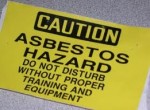 In the January of 1964, the Surgeon General made its first report linking cigarette smoking to lung cancer. Yesterday, the CDC announced a new triumph in the war against lung cancer by announcing that the rate of new lung cancer cases have decreased among men and women in the United States since 2005. Lung cancer incidence rates decreased 2.6% per year among men, and 1.1% per year among women. While, generally, this is a significant victory, the differing rates between men and women are troubling.
In the January of 1964, the Surgeon General made its first report linking cigarette smoking to lung cancer. Yesterday, the CDC announced a new triumph in the war against lung cancer by announcing that the rate of new lung cancer cases have decreased among men and women in the United States since 2005. Lung cancer incidence rates decreased 2.6% per year among men, and 1.1% per year among women. While, generally, this is a significant victory, the differing rates between men and women are troubling.
For many years, the female population was not smoking at the same rate as the male population, but the CDC stated, “smoking behaviors among women are now similar to those among men,” so “women are now experiencing the same risk of lung cancer as men.” If women have the same risk as men, it is troubling, therefore, that efforts to decrease new cancer incidences in women is declining at a slower rate than in men. Lung cancer is the leading cause of cancer death among men and women in the United States, and sex-based research must be conducted to determine why women seem to be lagging behind men in these decreased incidences.
The CDC attributes these decreased rates to tobacco prevention and control programs. The CDC calls for a continued emphasis on local, state, and national tobacco prevention strategies to mitigate future lung cancer diagnoses. Some strategies that have been accredited to this reduced incidence rate are increased tobacco prices, smoke-free laws, restricted tobacco advertising, and a slew of mass media campaigns against smoking.

 Women are much less likely than men to be diagnosed with mesothelioma cancer – an approximate four-to-one ratio – but there is little to suggest a gender-based defense or susceptibility. The discrepancy centers more on blue-collar occupations and workplaces that have been dominated traditionally by males.
Women are much less likely than men to be diagnosed with mesothelioma cancer – an approximate four-to-one ratio – but there is little to suggest a gender-based defense or susceptibility. The discrepancy centers more on blue-collar occupations and workplaces that have been dominated traditionally by males. Study Estimates More than 600,000 Deaths Worldwide Caused by Secondhand Smoke
Study Estimates More than 600,000 Deaths Worldwide Caused by Secondhand Smoke